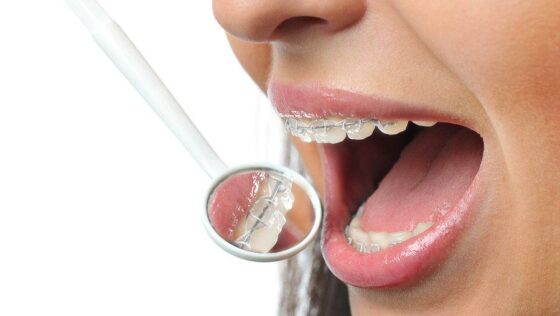The Definitive Guide for Legacy Orthodontics
The Definitive Guide for Legacy Orthodontics
Blog Article
7 Simple Techniques For Legacy Orthodontics
Table of ContentsGetting My Legacy Orthodontics To WorkGetting My Legacy Orthodontics To WorkGetting The Legacy Orthodontics To WorkSee This Report on Legacy OrthodonticsFacts About Legacy Orthodontics Revealed
In addition, we use adjustable therapy routines, adaptable settlement options and an enjoyable, pleasurable experience.An orthodontist is a dentist trained to diagnose, prevent, and treat teeth and jaw abnormalities. They fix existing problems and are educated to recognize problems that might develop in the future. Orthodontists function with individuals of all ages, from children to adults. Individuals typically link an excellent smile with health.
Malocclusion, or misaligned teeth, can lead to dental issues, including tooth degeneration, periodontal illness, and difficult or painful eating. Yet not everyone is birthed with straight teeth. If you have a negative bite or large areas between your teeth, you might intend to seek advice from a dental professional focusing on orthodontic treatment.
The smart Trick of Legacy Orthodontics That Nobody is Talking About
( Photo Credit Score: DigitalVision/Getty Images) Orthodontists utilize fixed and detachable oral tools, like dental braces, retainers, and bands, to transform the setting of teeth in your mouth. Orthodontic treatment is for oral irregularities, consisting of: Uneven teethBite problems, like an overbite or an underbiteCrowded teeth or teeth that are as well far apartJaw misalignmentThe goal of orthodontic therapy is to enhance your bite.
A healthy and balanced bite guarantees you can eat, eat, and speak effectively. While you could consider orthodontists as mainly for kids or young adults who need dental braces, they can correct oral problems at any type of age. Orthodontists participate in college, dental institution, and orthodontic school. After graduation, they invest 2 or 3 years in an orthodontic residency program.
, yet not all dental experts are orthodontists. They focus on 2 areas: Just how to effectively and safely relocate teeth Exactly how to appropriately guide advancement in the teeth, jaw, and faceOnce an orthodontist has completed training, they have the option to end up being board licensed.
Our Legacy Orthodontics Ideas
Imbalance, or malocclusion, is one of the most usual reason people see an orthodontist. It is hereditary and is the result of size differences between the upper and reduced jaw or in between the jaw and teeth. Malocclusion causes tooth congestion, an askew jaw, or irregular bite patterns. Malocclusion is generally treated with: Your orthodontist attaches steel, ceramic, or plastic square bonds to your teeth.
If you have just minor malocclusion, you may be able to use clear dental braces, called aligners, as opposed to typical braces (https://myspace.com/legacyortho). Some people need a headgear to assist relocate teeth right into line with pressure from outside the mouth. After braces or aligners, you'll need to use a retainer. A retainer is a custom tool that maintains your teeth in place.
They're most commonly used on youngsters. They can create additional room in the mouth without having to pull teeth. If you have a severe underbite or overbite, you might require orthognathic surgery (likewise called orthodontic surgery) to extend or shorten your jaw. Orthodontists use cords, medical screws, or plates to support your jaw bone.
You might need to see an orthodontist if you have: Crowding or otherwise sufficient space for every one of your teethOverbite, when your top teeth come by your bottom teethUnderbite, when your base teeth are as well much forwardSpacing or issues with gapsCrossbite, which is when your top teeth fit behind your base teeth when your mouth is closedOpen bite or an upright space in between your front base and upper teethMisplaced midline, when the center of your bottom and upper teeth don't align Remedying an oral malocclusion can: Make attacking, eating, and speaking easierImprove the symmetry of our face and your overall appearanceEase discomfort useful reference from temporomandibular joint disordersSeparate your teeth and make them simpler to cleanse, assisting prevent dental caries or cavities It's commonly a dentist that first notices misaligned teeth throughout a regular examination.
Unknown Facts About Legacy Orthodontics

During your first orthodontic consultation, you'll likely have: A dental examPhotos taken of your face and smileDental X-raysPanoramic (360 level) X-rays of your face and headImpressions to produce molds of your teethThese examinations will assist your orthodontist understand how to proceed with your treatment. leesburg braces. An orthodontist is a dentist that's had training to treat your teeth and jaw
Orthodontists might do surgery, exams,X-rays,and more to help you obtain an extra comfy, much healthier smile. An orthodontist is concentrated on your bite, so something like a broken tooth would certainly be managed by a dental practitioner. Orthodontists are dentists however not all dental practitioners are orthodontists. Orthodontists are focused on your bite, or the way your teeth meshed, and the straightness of your teeth.
Ever before questioned how celebs always seem to have completely lined up teeth? Orthodontists are oral specialists who concentrate on remedying abnormalities in the teeth and jaws.
Legacy Orthodontics - The Facts

While dental braces are the most generally acknowledged orthodontic therapy, orthodontists have a varied toolkit at their disposal. The specific strategy picked relies on the seriousness of the instance, the person's age, and private preferences. These tried-and-true braces use a system of braces adhered to the teeth and attached by wires.
These detachable trays are custom-made to gradually shift the teeth's setting. In cases of slim jaws, palatal expanders can be utilized to create space for correct tooth placement.
Report this page